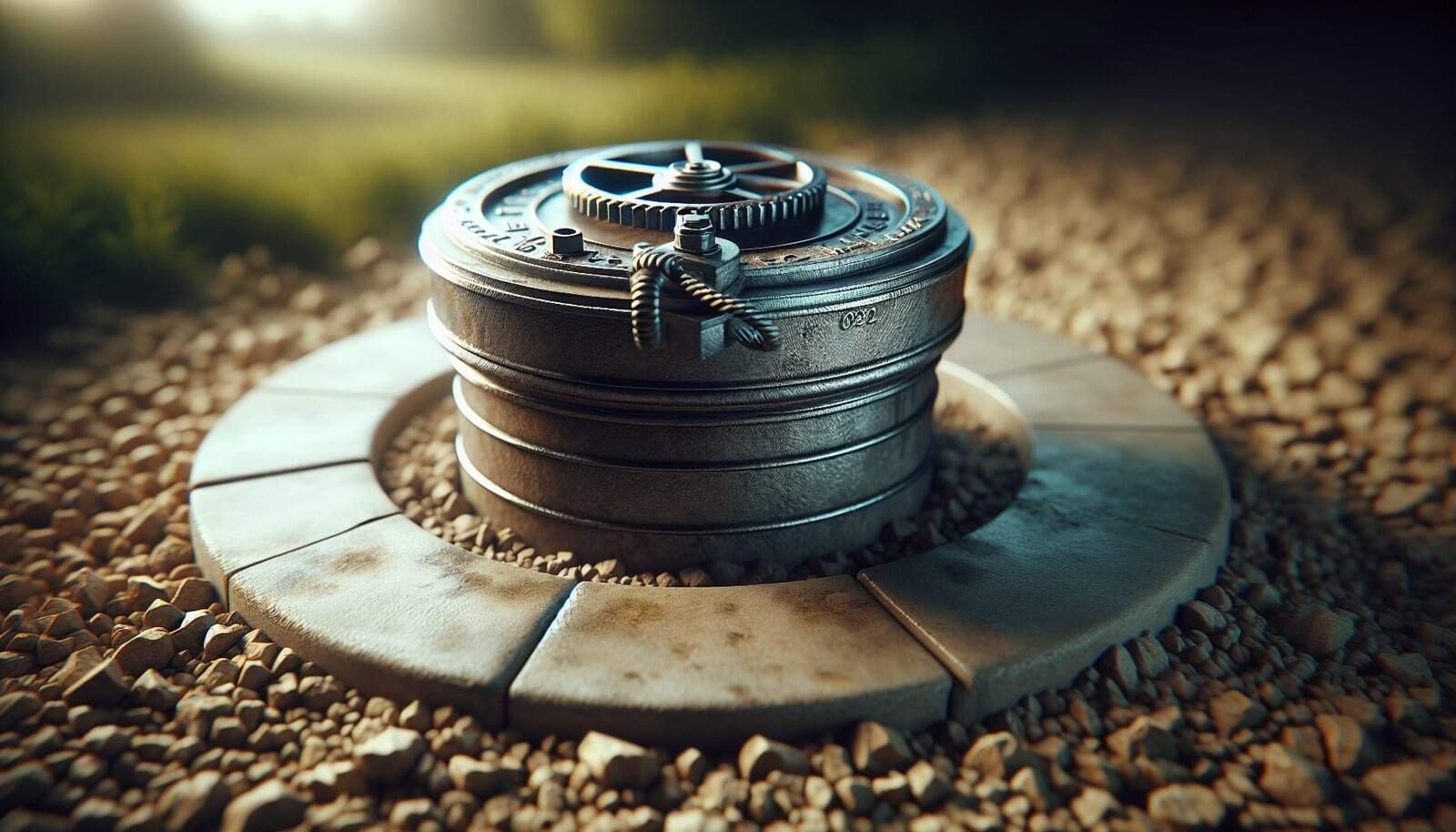Are you worried that fertilizer from your yard or a nearby field might be making its way into your well water?

How Do I Prevent Fertilizer Runoff From Reaching My Well?
You want safe water for drinking, cooking, and bathing, and preventing fertilizer runoff is one of the most important steps you can take. This article walks you through how runoff contaminates wells, how to assess your risk, practical steps you can take immediately and long term, monitoring and treatment options, and who to contact for help.
Why fertilizer runoff is a problem
Fertilizer runoff can carry nutrients and chemicals that change the chemistry and biology of groundwater. When nutrients such as nitrate enter your well, they can pose immediate health risks, especially for infants and pregnant people, and create longer-term water quality issues.
Understanding the nature of fertilizer pollutants helps you prioritize preventive steps and choose appropriate testing and treatment options. Two common fertilizer-related concerns are excess nitrates and pesticide residues that may be mixed with fertilizer or applied at the same time.
How runoff contaminates wells
Runoff reaches groundwater through surface flow and infiltration. Water moves overland during storms and can carry soluble nutrients into depressions, streams, or directly into the soil near your well.
If your well is shallow, improperly constructed, or located downhill from fertilizer application sites, it becomes more vulnerable. Poorly sealed wellheads and cracked casing give contaminants a direct path into the aquifer.
Common contaminants from fertilizers
Fertilizer and associated farm chemicals introduce several contaminants into water. Nitrate is the most common and most hazardous in drinking water, but pesticides and phosphate-related problems can also occur.
Below is a simple table showing typical contaminants, their sources, and health or environmental effects:
| Contaminant | Common source | Primary concerns |
|---|---|---|
| Nitrate (NO3-) | Synthetic fertilizers, manure, septic systems | Methemoglobinemia in infants, potential links to other health issues, algal blooms in surface water |
| Nitrite (NO2-) | Product of nitrate reduction under certain conditions | Toxic for infants and can indicate heavy contamination |
| Pesticides (e.g., atrazine, glyphosate) | Herbicides and insecticides often applied with fertilizers | Acute toxicity, endocrine disruption, long-term cancer risk depending on compound |
| Phosphate (PO4^3-) | Fertilizer | Surface water eutrophication (not usually a groundwater health issue) |
| Pathogens | Manure, improperly stored organic fertilizers | Gastrointestinal illness, especially in poorly managed systems |
Assessing your risk
You need to understand the factors that determine how likely fertilizer will reach your well. Assessing risk allows you to design a tailored prevention plan and prioritize actions that will reduce contamination chances most effectively.
Consider the layout of your land, local geology, how close fertilizer is applied, and the construction details of your well. These factors together determine vulnerability.
Well type and depth
Shallow wells are much more susceptible to surface contaminants than deep wells, but construction quality matters too. Your well depth and screened intervals dictate how quickly surface water can reach your water source.
If your well is less than 50 feet deep or has an unprotected casing, you should treat your risk as higher. Deeper wells may still be vulnerable if they have poor seals or if there is rapid recharge through fractures or gravel layers.
Soil and geology
Soil texture and local geology control how quickly water and dissolved fertilizers move downward. Sandy soils and fractured bedrock allow faster movement than clay-rich soils.
You should identify whether your soil is sand, loam, clay, or shallow over bedrock. Sandy soils and karst (limestone with fractures and sinkholes) are particularly risky for contamination spread.
Topography and drainage
Where water flows across your property matters a lot. If your well sits downhill from agricultural fields, lawns, or manure piles, runoff will naturally move toward it.
You should map slopes and identify concentrated flow paths like ditches, swales, or driveways that funnel water. Those channels can carry high loads of nutrients during storms.
Proximity to fertilizer sources
Distance matters. The closer fertilizer application is to your well, the greater the risk—especially within the “immediate zone” around the wellhead. This includes lawns, garden beds, and paved areas where runoff collects.
You should consider setbacks from septic systems, manure piles, livestock access points, and neighboring fields. Knowing local setbacks and planning buffers is an effective first step.
Well construction and condition
A well with a secure cap, intact casing, and a sanitary seal is far safer than one with cracks or a missing cap. Wells should be capped and maintained to keep surface water and animals out.
Arrange regular inspections and hold records of construction details, repairs, and the seal type to assess weakness and set priorities for upgrades.
Immediate actions you can take
You can reduce immediate risk with inexpensive fixes and simple behavioral changes. These measures help limit runoff generation and reduce the chance that what does run off will reach your well.
The following actions don’t require large investments but provide real protection while you plan longer-term measures.
Stop applying fertilizer near the well
Temporarily refrain from applying fertilizer within a buffer zone around your well. This simple step reduces the amount of nutrient available to runoff.
A temporary no-application zone of at least 10 meters (33 feet) is reasonable in many settings, but larger buffers are better, especially on slopes or in sandy soils.
Cover bare soil and prevent erosion
Bare soil contributes to erosion, which carries fertilizer-laden soil into drainage paths. Use mulch, temporary turf, or erosion-control fabric to protect exposed areas.
Even small patches near the well can be covered to interrupt the transport of nutrients during rainfall events.
Redirect surface runoff away from the well
Modify flow patterns so water moves away from the well broad area. You can use shallow berms, swales, or diversion channels to route water to vegetated areas or rain gardens.
Be careful not to channel runoff onto neighboring properties or create erosion problems elsewhere. Use gentle slopes and vegetation to slow and filter water.
Create temporary barriers
Silt fences, straw bales, or sandbags can act as short-term barriers during construction or heavy application periods. These measures slow water and trap sediment-bound nutrients.
Check and maintain barriers after storms. Replace or reinforce them until permanent measures are in place.

Long-term preventative strategies
Long-term solutions are the most reliable way to protect your well and the surrounding environment. These strategies are often cost-effective over time and can increase property resilience and value.
Implement a combination of vegetation buffers, better fertilizer practices, land management changes, and well upgrades to create multiple layers of protection.
Establish vegetative buffer zones
A vegetative buffer is a strip of grass, shrubs, or trees between fertilizer application areas and your well or waterway. Vegetation slows surface flow, traps sediments, and uptakes nutrients.
Buffers should be wide enough for your site conditions—typically at least 10–30 meters (33–100 feet) depending on slope and soil type—with native plants preferred for durability and low maintenance.
Use cover crops and reduced tillage
Cover crops and conservation tillage reduce erosion and keep nutrients on the field. They help absorb leftover fertilizer and build soil organic matter for long-term nutrient retention.
If you manage agricultural land or even a large garden, consider winter cover crops like clover or rye and minimizing tillage to maintain soil structure and reduce leaching.
Implement proper fertilizer management: the 4Rs
Applying the right fertilizer at the right rate, using the right source, and at the right time greatly reduces runoff and leaching. These “4R” principles are widely recommended by agronomists and environmental agencies.
Below is a table summarizing the 4R principles and practical tips:
| 4R Principle | What it means | Practical tips |
|---|---|---|
| Right source | Choose fertilizer type that meets crop needs with minimal mobility | Use stabilized or slow-release fertilizers; avoid highly soluble blends near wells |
| Right rate | Apply only what is necessary | Base rates on soil tests; follow label and extension recommendations |
| Right time | Apply when plants can use nutrients | Avoid heavy fertilization before heavy rain or during dormancy; split applications |
| Right place | Put fertilizer where plants will take it up | Band or place fertilizer near root zones; avoid broadcast application near wells |
Precision application and soil testing
Regular soil testing tells you exactly what nutrients your soil needs and prevents over-application. You should test soil every 2–3 years in stable landscapes and more often if you make big changes.
Precision tools—spreader calibration, GPS-controlled application, and variable-rate technology—are especially valuable on larger properties and farm settings for minimizing excess application.
Use slow-release fertilizers and inhibitors
Slow-release fertilizers, controlled-release coatings, and nitrification inhibitors reduce the immediate mobility of nitrogen. These products limit spikes in nitrate concentration following rain.
Consider them where you must apply fertilizer near sensitive areas or before periods with high rainfall probability.
Manage manure and organic fertilizers carefully
Manure contains high levels of nitrogen and pathogens. Store and apply it according to best practices and local rules to prevent spills, runoff, and infiltration around wells.
Composting and incorporating manure into soil at appropriate rates and times help reduce pathogen risk and nutrient loss.
Well construction and maintenance
Protecting the well itself is fundamental. Upgrading and maintaining well components reduces direct pathways from surface contaminants into groundwater.
You can often take relatively inexpensive steps such as sealing, sanitary caps, and grading to prevent surface water from pooling at the wellhead.
Proper well casing and sealing
A well should have an intact casing that extends above ground and be sealed with a sanitary well cap. The annular space around the casing should be grouted to prevent surface water from traveling down along the well pipe.
If you don’t know the condition of your casing or seal, arrange a professional inspection and consider re-grouting or replacing faulty parts.
Sealing unused wells
Abandoned or unused wells are direct conduits for contaminants. They must be properly sealed or decommissioned according to local regulations.
Contact your local health department or licensed well contractor to ensure proper closure. This eliminates an otherwise invisible leak path.
Inspect and maintain the well cap
A cracked or missing well cap invites animals, debris, or standing water into the well. Check the cap annually and after storms, and replace it if damaged.
Use a vermin-proof, vented sanitary cap designed for your well type to preserve ventilation while preventing contamination.
Surface grading and ground cover near well
Grade the ground so water flows away from the wellhead, and keep a gravel pad or impervious surface within a few feet to discourage puddling. Vegetation farther out helps filter and absorb runoff.
Avoid planting trees too close because roots can damage casings, while deep mulch right at the base can hide problems—maintain a clear area of gravel or solid surface around the immediate wellhead.
Recommended setback distances
Setbacks vary by jurisdiction and site conditions, but larger distances mean a lower risk of contamination. The following is a general starting point:
| Source | Recommended minimum setback from well |
|---|---|
| Lawn/garden fertilizer application | 10–30 meters (33–100 feet) |
| Septic system drainfield | 15–30 meters (50–100 feet) |
| Manure storage or livestock area | 30–100 meters (100–330 feet) |
| Agricultural application (heavy use) | 30–100 meters (100–330 feet) |
Always check local codes and extension service recommendations for precise setbacks in your area.

Monitoring and testing your water
Testing your well water is the only reliable way to know whether fertilizer runoff is affecting it. Regular testing and quick action on concerning results keep your family safe and inform what prevention steps you need.
Testing also documents changes over time and helps you evaluate whether implemented strategies are working.
What to test for
Start with a baseline test that includes nitrates, nitrites, total coliform bacteria, and basic chemistry (pH, conductivity). If you suspect pesticide use nearby, include common local pesticides.
If nitrate levels are elevated, ask the lab to measure nitrate-nitrogen and nitrite. If you suspect herbicides, request specific pesticide screens (these can be more expensive and are often targeted).
Testing frequency
Test at least once annually for baseline parameters, and test more frequently if you are in a high-risk area or after major events such as heavy rain, fertilizer application, or construction. For nitrates, testing every 3–6 months can be appropriate in vulnerable settings.
Also test when you install or upgrade a well, and after any well repair or sealing work.
Interpreting results and action levels
Understand regulatory and health-based thresholds to interpret tests. The U.S. EPA’s maximum contaminant level (MCL) for nitrate in drinking water is 10 mg/L as nitrogen (which is about 45 mg/L as nitrate). For nitrite the MCL is 1 mg/L as nitrogen.
Common action guidelines:
- Nitrate-N

